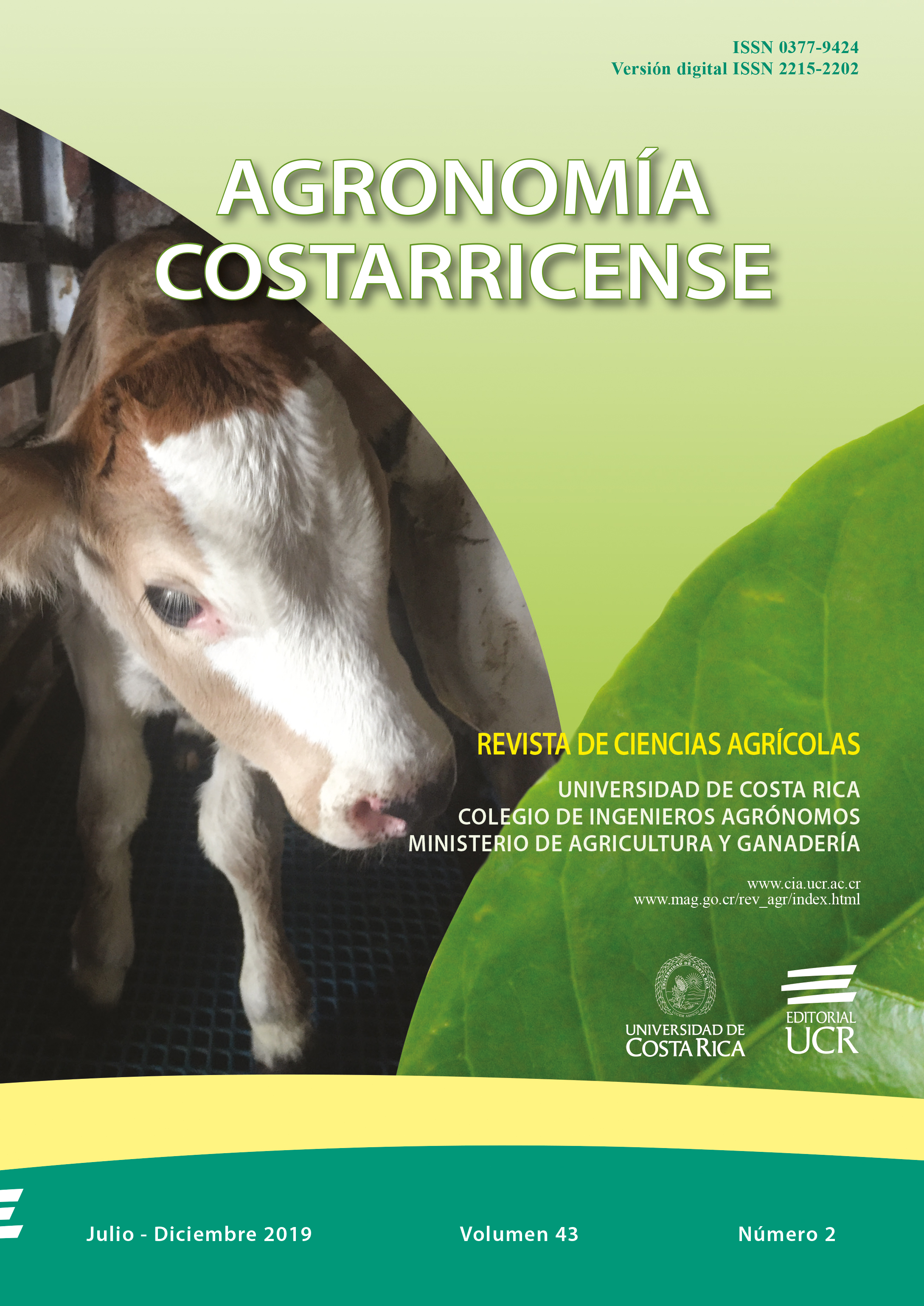Abstract
A survey of the diseases affecting pitahaya (Hylocereus costaricensis) in Costa Rica, carried out during 2011 and 2013, a hardened yellowish coating was observed on the surface of young tissue, which advanced from the edges toward the center of the stem and subsequently it took on a whitish-grayish coloration, mainly in mature cladodes. The presence of calcium oxalate crystals associated with these symptoms was determined by electron microscopy, X-ray spectrometry and X-ray diffraction. Calcium oxalate concentration was 147% higher in symptomatic cladodes compared to healthy ones. Electron microscopy analysys showed rafidium crystals and cubes, composed mainly by carbon, oxygen and calcium, in symptomatic material. Moreover, the presence of oxalates in diseased tissue was confirmed by X-ray diffraction. In this research was determined the presence of calcium oxalate crystals associated to the “white spot” abiotic disease that affects the photosynthetic capacity of Hylocereus costaricensis plants in Costa Rica.


